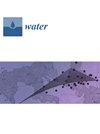湖泊生态系统面临的挑战:气候变化引发的热结构变化
IF 3
3区 环境科学与生态学
Q2 ENVIRONMENTAL SCIENCES
引用次数: 0
摘要
人类活动、全球变暖、频繁的极端天气事件以及大气成分的变化会影响到达地球表面的太阳辐射,影响空气-水界面的质量和热量传递,并引起风驱动内波的振荡。这导致湖泊热分层的时空特征发生变化,改变湖泊环流模式和垂直质量传递。然而,热分层结构往往被忽视。气候变暖导致湖泊热分层加剧,可能会增加湖底污染物的释放,并通过热层的动态行为扩散到湖底。此外,热储量的增加有利于某些浮游植物的生长和发育,从而导致湖泊原有稳定状态的快速转变。因此,可能会出现水质恶化、生态退化和生物多样性减少的情况。传统的地表水监测可能无法提供全面、准确和及时的评估。模型模拟可以更好地预测未来的热分层行为,减轻财政负担,提供更精细的评估,从而防止后续环境问题的发生。本文章由计算机程序翻译,如有差异,请以英文原文为准。
Challenge to Lake Ecosystems: Changes in Thermal Structure Triggered by Climate Change
Human activities, global warming, frequent extreme weather events, and changes in atmospheric composition affect the solar radiation reaching the Earth’s surface, affect mass and heat transfer at the air–water interface, and induce oscillations in wind-driven internal waves. This leads to changes in the spatiotemporal characteristics of thermal stratification in lakes, altering lake circulation patterns and vertical mass transfer. However, thermal stratification structures are often overlooked. The intensification of lake thermal stratification due to warming may lead to increased release of bottom pollutants, spreading through the dynamic behavior of the thermocline to the epilimnion. Moreover, the increased heat storage is beneficial for the growth and development of certain phytoplankton, resulting in rapid transitions of the original steady state of lakes. Consequently, water quality deterioration, ecological degradation, and declining biodiversity may occur. Conventional surface water monitoring may not provide comprehensive, accurate, and timely assessments. Model simulations can better predict future thermal stratification behaviors, reducing financial burdens, providing more refined assessments, and thus preventing subsequent environmental issues.
求助全文
通过发布文献求助,成功后即可免费获取论文全文。
去求助
来源期刊

Water
WATER RESOURCES-
CiteScore
5.80
自引率
14.70%
发文量
3491
审稿时长
19.85 days
期刊介绍:
Water (ISSN 2073-4441) is an international and cross-disciplinary scholarly journal covering all aspects of water including water science and technology, and the hydrology, ecology and management of water resources. It publishes regular research papers, critical reviews and short communications, and there is no restriction on the length of the papers. Our aim is to encourage scientists to publish their experimental and theoretical research in as much detail as possible. Full experimental and/or methodical details must be provided for research articles. Computed data or files regarding the full details of the experimental procedure, if unable to be published in a normal way, can be deposited as supplementary material.
 求助内容:
求助内容: 应助结果提醒方式:
应助结果提醒方式:


